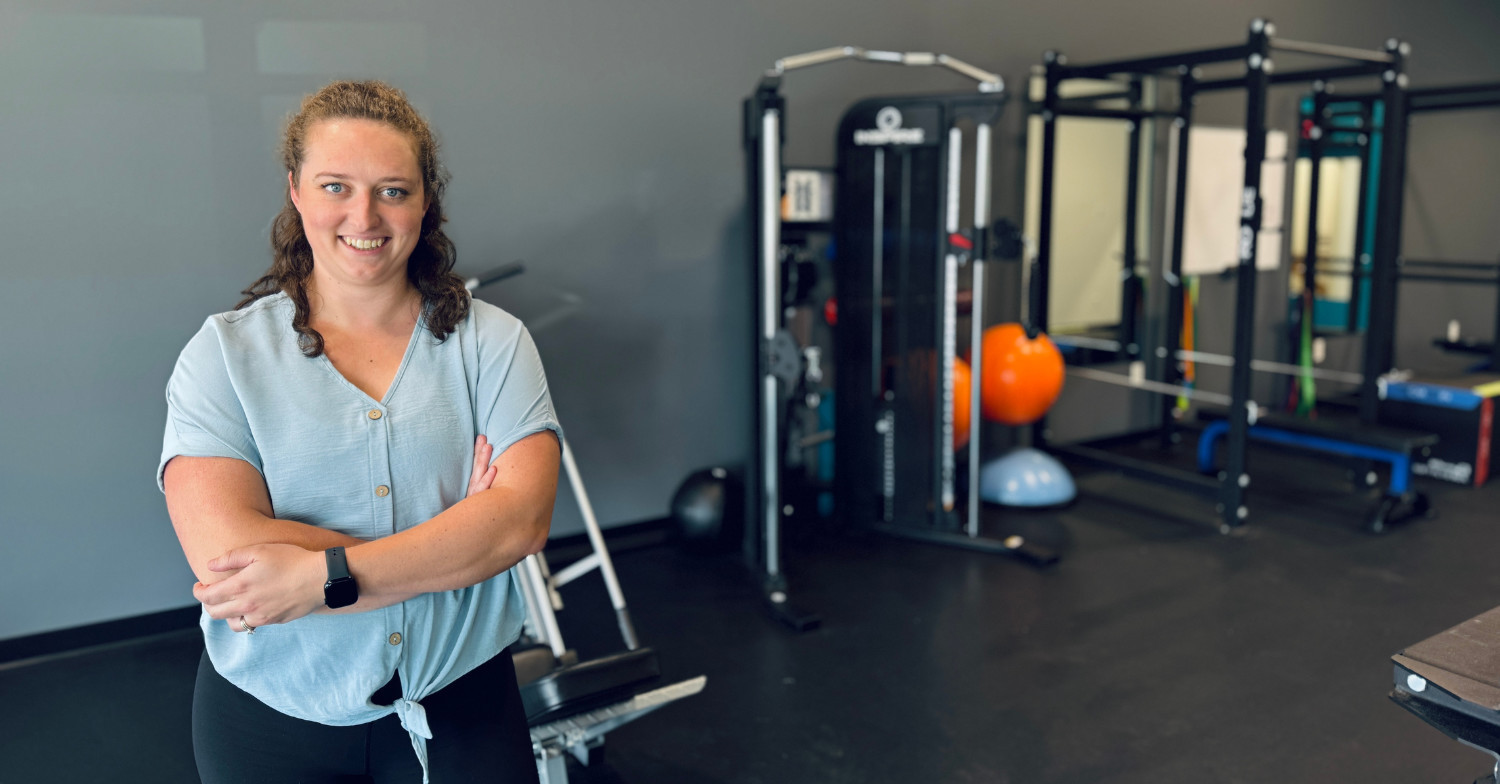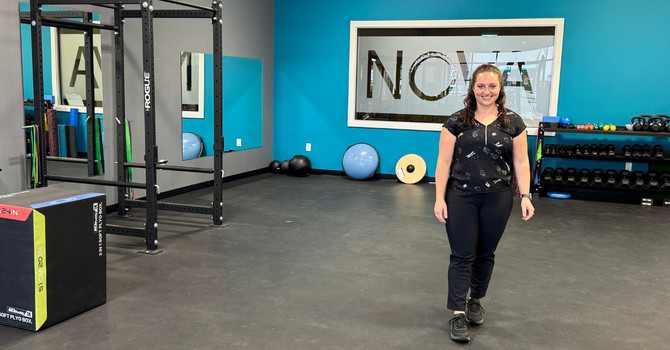
Jaw pain is quite common and many clients come into the clinic that experience clicking or popping of the jaw, experience headaches, notice they clench during the day or at night, notice locking of the mouth (either open or closed) and feel general tightness and tension in the jaw, head and neck.
Having these symptoms can make us afraid to open our mouth for an extended period of time (think of being at the dentist), yawn, chew or talk - all tasks that we use the jaw for!
There are a few things you can do to help provide some relief if you are experiencing some of the symptoms above! In this blog we will discuss what the TMJ (Temporomandibular Joint) is and some options that may provide you with some relief.
What do the acronyms TMJ and TMJD mean?
The TMJ (Temporomandibular Joint) refers to the joint on either side of the jaw that assists with opening and closing the mouth. The two joints of the jaw work together to allow you to complete movements such as yawning, chewing, and biting.
When issues arise in this area, oftentimes it is referred to as TMJD (Temporomandibular Joint Dysfunction). This may arise from a combination of muscles that surround the jaw, the disc within the joint, or the joint itself. If there is dysfunction, you may be feeling some of the symptoms that were described earlier. Typically the most common symptoms that is described are feeling and hearing a click or pop while chewing or opening the mouth, headaches on the side or front of the head, tooth pain, and tension or pain near and around the jaw and neck. Some people also experience locking or limited range of motion of the jaw.
Why do I feel these symptoms?
There is an articular disc that sits between the moving parts of the jaw which ensures that the jaw can move smoothly. When the disc functions correctly, it moves forward and backward when the mouth opens and closes. If there is damage to the ligaments that control the disc, it can slip out of place, typically being pulled forwards. When this happens, there is no longer the normal amount of cushion between the upper and lower parts of the jaw. Mild disc displacements can cause a clicking or popping sound in the joint and sometimes can be painful. More severe disc displacements can result in locking of the jaw open or closed. Clicking and popping can occur if the jaw does not move smoothly, there is a deviation with the movement position or motor control of the jaw, or if there is a disc displacement - the most common being an anterior displacement.
Clenching or grinding of the teeth, also known as Bruxism, can occur during the day or night. Clenching can put pressure on the articular disc of the jaw and contribute to muscle tightness and tension. The muscles in the jaw and face can get tight and result in symptoms such as pain, tension or headaches. Stress can also play a role in these symptoms.
Some people also experience headaches. This may be due to the frontalis muscle which is a muscle of the forehead, the temporalis muscle at the side of the head, or the suboccipitcal muscles which are the muscles at the back of the neck. Oftentimes, people with headaches experience jaw pain or vice versa.
There are other possible causes of why you may be experiencing symptoms and a thorough assessment will be valuable in identifying why your specific symptoms are occurring.
The jaw completes many different movements throughout the day. The jaw can move up and down, side to side, and forward and backward. These movements are performed by a number of muscles working together while also controlling the position of the joint. Chewing and talking require a lot of muscles working together in many different directions. This is why motor control is so important as part of any treatment plan!
Strategies that may help improve symptoms
1. Self massage of muscles
Releasing the muscles on your own is great option that you can do anytime! Use either your hand or a massage ball to release the muscles around the jaw, temple and neck. This is especially helpful if you notice that you tend to clench the jaw during the day or night. Click the link HERE to be taken to our Nova Youtube channel where you can learn how to perform each muscle release!
2. Mouth opening position
Once the muscles are allowing you to move better, it is incredibly important to teach the jaw to move in a better position for more long term management of symptoms. Otherwise the muscle tightness is more likely to return! Try a ‘controlled opening’ position. Place the tongue on the roof of your mouth and then open slowly and in control while keeping your chin in a straight line. Use a mirror so you can watch the position and try to keep it as straight as possible. When working on motor control, try to incorporate this into your everyday routine. For example, everytime you are in front of a mirror (after brushing your teeth or washing your hands) do 10 repetitions of this exercise!
3. Neck Position & Strength
Neck positioning and neck strength are both very important in a jaw treatment plan. The jaw and neck are positioned closely together and when the neck isn’t positioned well, it will impact the jaw. Commonly it is seen that people will sit with a forward positioned head which changes the position of the neck and can change how the jaw moves. Additionally if the muscles of the neck are weak, it will make it much harder to move the neck and jaw in a proper position.
Try a chin tuck position which feels like giving yourself a ‘double chin’ and then open and close your mouth trying to keep the jaw position nice and straight. This may feel strange or challenging, especially if the neck needs strengthening or improved positioning. Be sure to chat with your physiotherapist about this as there are many different exercises that can be worked on to address this!
4. Avoid chewing gum
Chewing gum puts continual pressure and stress through the muscles of the jaw and can increase tension, tightness and pain. It may also reinforce a poor jaw opening and closing position which can make it challenging to work on the motor control. Try mints instead!
5. Breathing exercises
Breathing exercises can help with many things! In terms of the jaw, it is known that stress can result in increased jaw tension. By incorporating breathing exercises into your routine it can help reduce symptoms and bring awareness to the jaw. Sometimes just noticing how the jaw is feeling and thinking about relaxing the area while taking belly breaths can help reduce symptoms. Try belly breathing where you fill your belly with a nice large breath for 3 seconds and then slowly breathe out for 3 seconds. Try 3 of these a few times a day and see how they feel.
6. See a Physiotherapist at Nova
These ideas are a great starting point to start to work on your jaw. However booking in with Amber at Nova will allow for a full assessment and treatment plan that is specific to you! Assessment will involve checking the jaw and neck, the muscles, joints, and the strength and motor control involved. It will help identify the possible causes for your symptoms and where you should be focusing your energy on. Commonly there are findings that involve muscle tightness, joint dysfunction or stiffness, motor control issues, neck weakness, or poor positioning. With an assessment it will become more clear on which areas should be addressed and what is already doing well! A treatment plan is specific to you and your needs.
What does a Physiotherapy assessment for the jaw involve?
Your assessment will include a detailed history and questions may include;
- Do you have neck, head and/or jaw pain?
- Do you experience headaches or ear pain?
- Do you notice clicking or popping when you open your mouth, close your mouth, or when you eat or yawn?
- Has your mouth ever locked open or been locked closed?
There will be additional questions and you are welcome to add anything that you feel is important. Once the detailed history is complete, a full and thorough assessment of the neck and jaw will take place. This may include an internal examination of the mouth however if you are not wanting the internal exam - just be sure to let your therapist know! After the assessment a specific treatment plan will be created to help address the findings from the session. This may include hands-on techniques from the therapist and exercises to work on possible findings such as motor control, muscle tightness or muscle weakness in the jaw or neck.
If you are experiencing any of the symptoms listed above, you are looking to get your jaw assessed or you have questions about the jaw - it is time to book in with Amber! You can book HERE!


.jpg)

